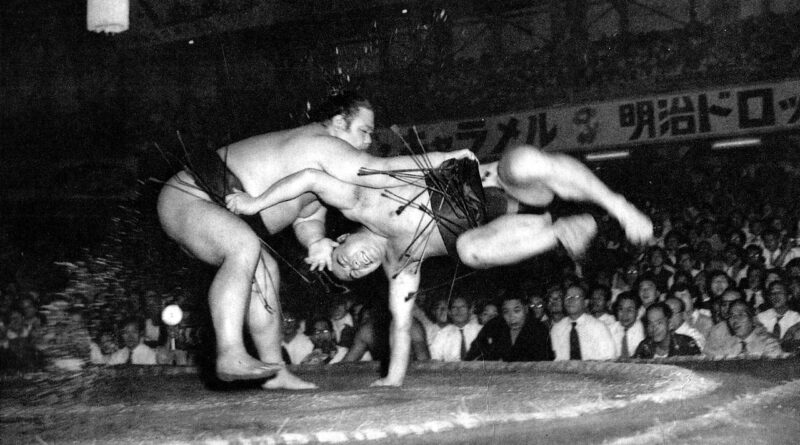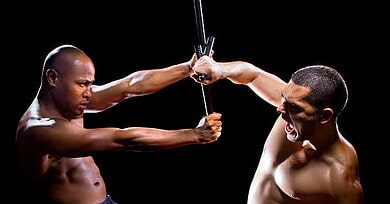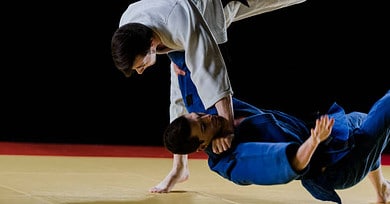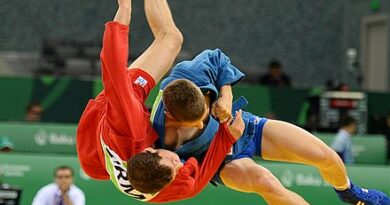Sumo: Unveiling the Majestic Art of Japanese Wrestling
Introduction
Sumo, the traditional Japanese sport, embodies a rich history, profound philosophy, intricate tactics, and rigorous training methods. As a cultural icon and a true test of physical prowess, sumo wrestling captivates both enthusiasts and casual observers alike. In this article, we delve into the fascinating world of sumo, exploring its origins, philosophical underpinnings, tactical intricacies, and the rigorous training regimens that mold its formidable wrestlers.
Origins and History
Sumo traces its roots back to ancient Japan, where it began as a religious ritual to entertain the Shinto deities. Over the centuries, it evolved into a competitive sport, gaining popularity among the masses. In the early 17th century, sumo became a professional endeavor, with the establishment of formal training stables and the birth of professional sumo tournaments.
Philosophy and Cultural Significance
Sumo is not merely a physical contest but also a reflection of Japanese culture and philosophy. It embodies the principles of discipline, respect, and harmony. Wrestlers, known as rikishi, adhere to a strict code of conduct and display unwavering respect for their opponents and the sport itself. The sport’s rituals and ceremonies, such as the salt throwing and the intricate ring entering ceremony, showcase the deep-rooted traditions and reverence associated with sumo.
Tactics and Techniques
At its core, sumo is a sport of strategy, strength, and balance. The objective is simple: to force an opponent out of the circular ring, or dohyo, or make them touch the ground with any part of their body other than the soles of their feet. Wrestlers employ various tactics to gain an advantage, such as pushing techniques (oshi-zumo), where they aim to drive their opponent out of the ring, and grappling techniques (yotsu-zumo), which involve grabbing the opponent’s mawashi (loincloth) to gain leverage and control.
Sumo Training
Training to become a sumo wrestler is a demanding and arduous process. Prospective wrestlers, or deshi, enter training stables, or heya, at a young age, usually in their mid-teens. They live a highly regimented life, adhering to strict rules and dedicating themselves entirely to the pursuit of sumo excellence.
The daily training routine, or keiko, includes a combination of physical conditioning, technical drills, and sparring matches. Intense weight training, endurance exercises, and flexibility workouts are essential to develop the strength and agility required for success in the ring. Additionally, wrestlers undergo specialized sumo-specific exercises, such as shiko (stomp), suriashi (sliding footwork), and teppo (slapping techniques) to enhance their technique and balance.
Diet also plays a crucial role in a sumo wrestler’s training. Rikishi consume a substantial amount of food, known as chankonabe, to gain weight and build muscle mass. Chankonabe typically consists of protein-rich ingredients like fish, meat, and vegetables, providing the necessary nutrition to sustain the rigorous training regimen.
Conclusion
Sumo wrestling stands as a testament to Japan’s rich cultural heritage and the dedication of its practitioners. Its origins as a religious ritual have transformed it into a revered sport that embodies discipline, respect, and strategic prowess. From its deep philosophical underpinnings to the intense physical training, sumo remains an awe-inspiring pursuit that continues to captivate audiences worldwide.
The sport’s timeless traditions, captivating rituals, and fierce competitions serve as a window into Japanese culture and the essence of sumo itself. Whether one appreciates the artistry, tactical brilliance, or the physical spectacle, sumo wrestling
Professional Tournaments and Rankings
Sumo wrestling’s pinnacle lies in the six annual professional tournaments, or basho, held throughout Japan. Each basho spans 15 days and takes place in grand sumo arenas, attracting massive crowds of fervent fans. The most prestigious of these tournaments are held in Tokyo at the Ryogoku Kokugikan, the spiritual home of sumo.
Within the professional sumo world, wrestlers are ranked based on their performance in these tournaments. The top division, called the Makuuchi, consists of the highest-ranked wrestlers, followed by the Juryo division. Wrestlers compete against opponents within their own division, striving to accumulate wins and climb the rankings ladder. At the end of each tournament, those with outstanding performances may be promoted to a higher division, while those with poor results may face demotion.
The Yokozuna: The Highest Rank
The Yokozuna rank represents the pinnacle of sumo wrestling and is reserved for those who display exceptional skill, dignity, and consistency. Yokozuna, or grand champions, are expected to embody the ideals of sumo both inside and outside the ring. They are revered figures in the sumo world and serve as role models for aspiring wrestlers.
The rigorous requirements for attaining and maintaining the Yokozuna rank include winning consecutive tournaments or displaying consistent top-level performances over multiple tournaments. Yokozuna wrestlers undergo immense pressure, as they are expected to lead by example and uphold the traditions and values of sumo.
Sumo’s Global Expansion
While deeply rooted in Japanese culture, sumo has gained international recognition and a growing fan base beyond its shores. Efforts to promote the sport globally have led to exhibitions and tournaments being held in various countries, attracting local talent and raising awareness about sumo’s unique appeal.
In recent years, foreign-born wrestlers, known as rikishi from overseas or “foreign-born rikishi,” have achieved remarkable success in the professional sumo ranks. Their presence has added diversity to the sport and brought a new dynamic to the sumo scene, expanding its global appeal.
Sumo wrestling continues to captivate audiences with its blend of physical prowess, strategic finesse, and cultural significance. From its ancient origins as a sacred ritual to its modern-day professional tournaments, sumo remains deeply ingrained in Japanese society and serves as a symbol of tradition, discipline, and respect.
The fusion of philosophy, tactics, and intensive training forms the bedrock of sumo’s enduring allure. As fans marvel at the wrestlers’ impressive physiques, intricate techniques, and unwavering dedication, they become witnesses to a sport that stands as a testament to Japan’s rich heritage and the indomitable spirit of its athletes.
Whether one embraces sumo for its profound philosophy, its gripping battles of strength, or simply as an intriguing cultural spectacle, there is no denying the extraordinary beauty and magnetism that lie within the ancient art of sumo wrestling.



